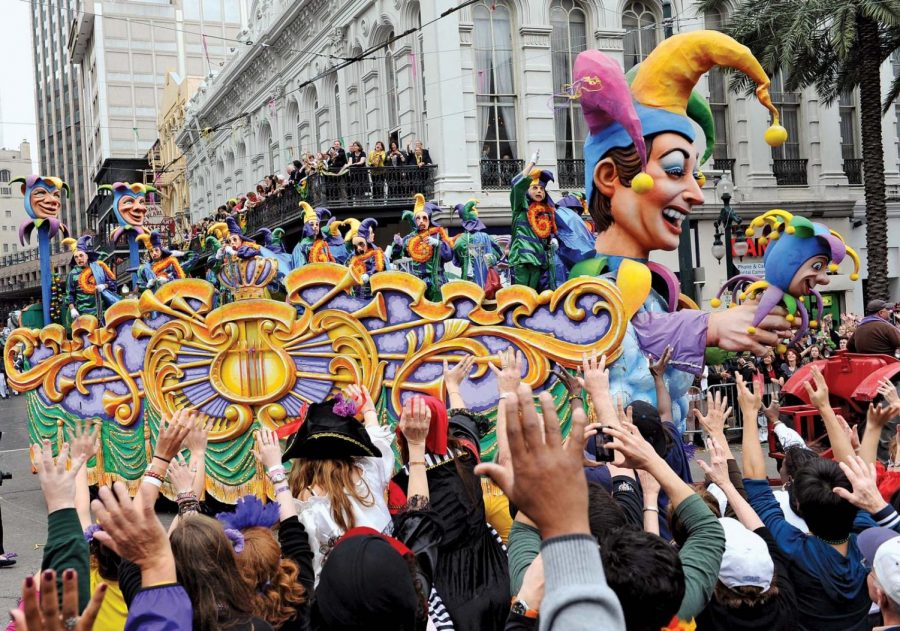The History of Mardi Gras
You’ve likely heard of Mardi Gras, which in English means Fat Tuesday, but you probably haven’t heard of the history and traditions that make up this annual celebration.
February 1, 2021
Lent is a time for reflection and patience. However, the Tuesday before Lent is a time for celebration, especially in New Orleans, Louisiana.
Mardi Gras originated centuries ago when Christianity came to Rome and spread to other European countries including France, Germany, Spain, and England. In 1699, French explorers led by Pierre Le Moyne d’Iberville and Sieur de Bienville arrived on land about 60 miles south of present-day New Orleans. The explorers named it “Pointe du Mardi Gras” when they realized it was the eve of the joyous holiday. Mardi Gras’ rituals included street parties, masked balls, and lavish dinners. When the Spanish came to power in New Orleans, they put an end to the customs. Mardi Gras officially became celebrated again in 1812 when Louisiana became a state.
Mardi Gras has many iconic festivities and aspects. We’ve all seen the purple, green, and gold beads being worn on Mardi Gras day, but did you know the colors have a meaning? Purple stands for justice, green for faith, and gold for power. These colors can also be appreciated in floats, costumes, masks, and even in food. King Cake is a well-known Mardi Gras food; it’s an oval shaped coffee cake with purple, green and gold icing. A plastic baby Jesus is placed on the inside of every cake, and whoever finds the “King” in their slice becomes king for the day! Also, in New Orleans, it’s legal to wear masks and costumes throughout the day, even if you aren’t part of a parade.
The festival of Mardi Gras, or Fat Tuesday, is a lively way to kick off the season of Lent. Regardless of whether you celebrate or not, it’s interesting to know the history and traditions of this colorful day.
Sources:
“Mardi Gras 2021.” History, 24 Feb. 2020, www.history.com/topics/holidays/mardi-gras. Accessed 26 Jan. 2021.
New Orleans: Mardi Gras parade. Image. Britannica School, Encyclopædia Britannica, 6 Nov. 2020. school.eb.com/levels/high/assembly/view/221177. Accessed 26 Jan. 2021.
“New Orleans Mardi Gras Traditions and Their History.” Hotel Monteleone New Orleans, 8 Jan. 2018, hotelmonteleone.com/blog/new-orleans-mardi-gras-traditions/. Accessed 26 Jan. 2021.

